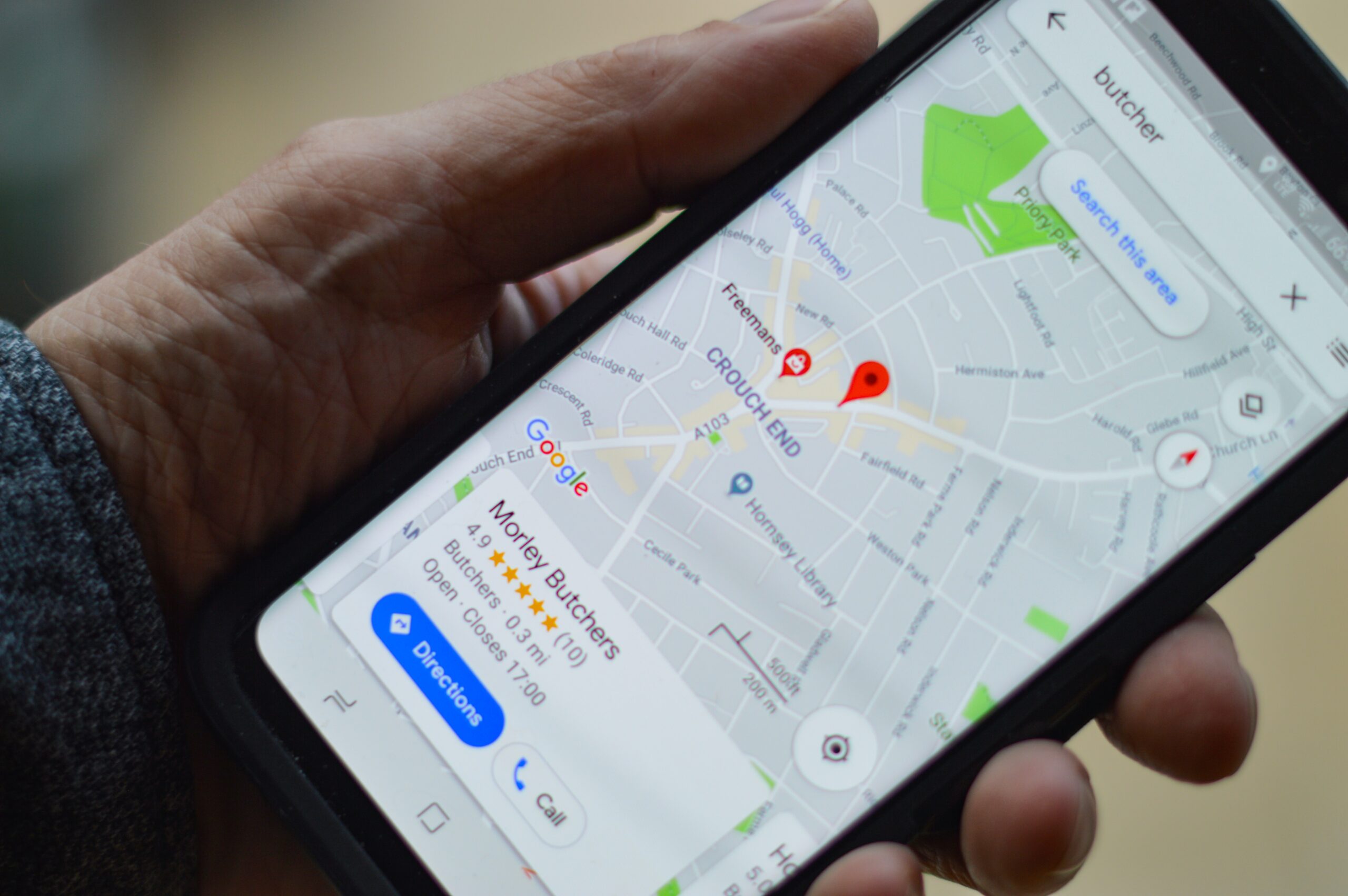When considering a new website, it’s important to audit your current website to figure out what is currently working for you, and features that you might want to add to improve it. To help you out, we’ve put together this handy list of 10 things your new website needs. If your current website doesn’t have these features, you should consider how they could benefit your business or customers.
10 things that your new website needs:
- Contact form
- Interactive map
- Call-to-action (CTA)
- Visual branding
- About page
- Page speed optimisation
- Blog posts/articles
- Lead magnets
- Local SEO optimisation
- Social media links
1. Contact form
A contact form is a great way to encourage your visitors to contact you without them leaving your website. You can use a contact form to collect questions, queries, complaints, or custom orders and purchases.
Contact forms are generally made of three or more fields:
- First name
- Last name
- Email address
- Subject (optional)
- Reason for enquiry (optional)
- Message
They allow the visitor to enter their details and send an email to the inbox of the email address connected to the contact form. You can configure most contact forms to include spam protection, such as a math problem or a ReCaptcha service.
By using a contact form on your website, your user doesn’t have to spend time searching for your business email address and making sure it’s typed correctly to be able to contact you. Additionally, it gives the user the impression that you welcome customer contact, and helps to build a sense of trust and connection with your user.

2. Interactive map
Maps are a part of everyday life for most people, whether they are trying to find the fastest route to a new destination, or searching for places of interest nearby. Having an interactive map on your website makes it convenient for your customers to find your business quickly, and plan their route to and from your physical location.
What makes an interactive map so pleasant to use is the ability to zoom in and out, and move the map around to view streets and places in more detail. Allowing your customers to open the map in an app of their own such as Google Maps makes it fast and easy for them to gather directions and make their way to your business.
Alongside the map, you should also include your address so that they can copy and save it as needed. This ensures that your user knows exactly where to find you, and helps them decide if the route is right for them. If you have a physical location and your customers don’t know where you are, they are unlikely to purchase from you.
3. Call-to-action (CTA)
Simply put, a call to action (CTA) is an instruction on what the user should do next on your website. If you are looking for your user to complete an action on your site, you should be placing CTAs within relevant content to guide them to take that action.
For example, if you are trying to guide your user to look at a menu within your restaurant, you should place a section asking them to view your menu alongside a button directly to the page. The CTA can then be copied and placed on any page relating to the menu.
CTAs are a great way of directing your user from one page to another and guiding them along the buyer’s journey.
4. Visual branding
Branding is a vital part of any website, and it makes your website unique, professional, and coherent. You should include consistent branding elements throughout your website such as logos, colours, and fonts.
For example, on the McDonald’s website, some of the branding elements you will consistently see are:
- The iconic red and gold colours
- McDonald’s product imagery
- Fonts that are consistent with their brand throughout the site
Branding is an important part of every business, and it allows you to establish yourself in the industry and stand out from your competitors, as well as build trust with and relate to your potential customers. If your website isn’t branded in the right way, you could be missing out on connections with your audience and losing out on their purchase.
5. About page
Today, your brand story is more important than ever. Purchases are becoming increasingly emotional, and your customers care about supporting brands they relate to more than ever. The emotional factor in purchases is so strong that they are even willing to part ways with a business that they don’t share values with.
An ‘about us’ page gives you the opportunity to win over your potential customer by sharing the story of your business, the values you stand for, and the ideals that you support. You should be looking to relate with your users through compelling text and images that boasts the personality and values of your business and brand.
Expressing your support for values that you share with your buyers – such as sustainability, equality, and ethical business practices – can help you to win over your customers and allow you to compete with your customers.
6. Page speed optimisation
If your new website is slow, you might need to take additional steps to improve the loading time and avoid frustration among your users. Planning to use best practices to keep your site fast and efficient will save you time in the future.
The following are some steps you can take to make your your website loads efficiently:
- Upload images in a reasonable size and quality.
- Compress PDF files
- Analyze plugins and clear out unused applications.
- Leave out unnecessary visual elements such as animations
A fast website will encourage your users to stay and explore your website, leading to interactions and even purchases. Improving your page speed can also affect your SEO, as page speed is an important factor in Google rankings.
7. Blog posts/articles
Have you noticed that every website seems to have a blog nowadays?
If you’ve ever wondered why, it’s because having a blog on your website can be a great tool for SEO, as well as educating, informing, and entertaining users.
Content marketing using a blog is an opportunity to rank for more terms and topics on Google and tell the search engine that your website is relevant and frequently updated. Not only that, but it can tell your user that your website is an authoritative source with educational content and helpful resources that they can take value from.
Overall, investing in a blog can help your website in a number of ways, and it’s a feature you should be considering when designing your new website.
8. Lead magnets
A lead magnet is something that your website offers its users in exchange for information such as contact details for a mailing list.
For example, you might offer a video tutorial for one of your products. Instead of charging your customer for the video, it might be a good idea to offer the video for free and instead ask for them to sign up for your mailing list instead. By doing this, you can promote your products and send targeted emails to gain a future purchase.
Email marketing can be a powerful tool when marketing products and services, but it can prove difficult to persuade your visitors and customers to sign up to receive your emails. The most effective way to entice an audience is to offer them something valuable and useful to their business. This is where buyer personas come into play, as they can allow you to craft the perfect lead magnet that your ideal customer won’t be able to resist.
9. Local search engine optimisation
If your business has a physical location and you aim to attract customers in the nearby area, then optimising your website for local SEO is essential. By adding your address and location strategically, you can make sure that you show up when your potential customers are searching for businesses like yours nearby.
For example, if your customer is searching for ‘bakeries in Plymouth’, you need to ensure that your website is telling Google that you are a bakery in Plymouth. This means Google will consider you as a relevant search for the user.
Make sure you have a Google My Business account that has a link to your website. Doing this will give you a chance to show up in the business/location panel in the google search engine results page (SERP) so that your users can visit your website easily.

10. Social media links
There’s no doubt that social media is a significant part of our everyday lives in 2022. All over the world, people are using social media to connect with loved ones, chat with friends, conduct business and make purchases. Most businesses have some sort of social media plan, whether it’s updating a small audience in their local area or pushing nationwide adverts to the public.
Including updated and relevant (no, that doesn’t mean Google+) social media icons with working links is a way to encourage your visitors to stay connected with you and keep receiving updates.
If your customer can’t find your business straight away on social media, their next step is usually to visit the website and search for icons they can click through. Make sure your social presence is shared on your website with Facebook, LinkedIn, Twitter, and Youtube icons.
Looking for a new website?
Ocean Pixel Studios can help! We build professional, unique and effective websites that help businesses achieve their goals and maximise their digital potential. Contact us today to find out how we can build a website that is right for your business.